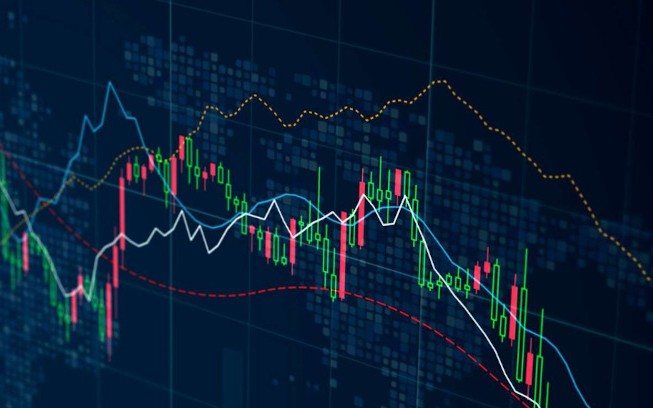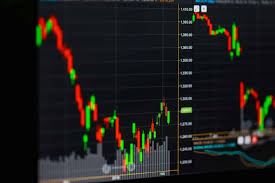|
30
10/2025
|
The Ultimate Guide to Forex Trading Education 1975654954
|
29
10/2025
|
Kategori : Trading3 Author : Admin LPPM |

In the ever-evolving landscape of financial markets, Forex trading has emerged as a popular avenue for individuals seeking to capitalize on currency fluctuations. For those interested in this dynamic field, forex trading education exglobal.pk offers a wealth of resources to enhance your trading knowledge and skills. This guide aims to provide a thorough overview of Forex trading education, covering key concepts, strategies, tools, and tips for aspiring traders.
Understanding Forex Trading
Forex, or foreign exchange, refers to the global market for trading national currencies against one another. The Forex market is the largest financial market in the world, with a daily trading volume exceeding $6 trillion. Unlike other markets, the Forex market operates 24 hours a day, five days a week, allowing traders to engage in activities at their convenience.
The Basics of Currency Pairs
In Forex trading, currencies are traded in pairs. A currency pair consists of two currencies: the base currency and the quote currency. For example, in the EUR/USD pair, the euro is the base currency, and the US dollar is the quote currency. The exchange rate represents how much of the quote currency is needed to purchase one unit of the base currency. Understanding currency pairs is crucial for making informed trading decisions.
Major, Minor, and Exotic Pairs
Currency pairs can be categorized into three main types:
- Major pairs: These include the most traded currencies and typically contain the US dollar (e.g., EUR/USD, USD/JPY, GBP/USD).
- Minor pairs: These pairs do not involve the US dollar and include currencies like the euro, pound, and Australian dollar (e.g., EUR/GBP, AUD/NZD).
- Exotic pairs: These consist of a major currency paired with a currency from a developing or smaller economy (e.g., USD/THB, EUR/SEK).
Key Concepts in Forex Trading
Before diving into trading, it is essential to grasp fundamental concepts that govern the Forex market. Here are some key elements:
Leverage and Margin

One of the significant advantages of Forex trading is the availability of leverage, which allows traders to control large positions with a relatively small amount of capital. Leverage can amplify profits, but it also increases the risk of significant losses. Understanding how margin and leverage work is crucial for effective risk management.
Technical Analysis vs. Fundamental Analysis
Traders employ two primary methods for analyzing market movements:
- Technical Analysis: This approach involves analyzing historical price charts and patterns to predict future price movements. Traders use various tools such as moving averages, support and resistance levels, and oscillators.
- Fundamental Analysis: This method focuses on economic indicators, geopolitical events, and other factors that can influence currency values. Traders analyze data such as interest rates, inflation rates, and employment figures.
Understanding Forex Trading Strategies
Having a well-defined trading strategy is crucial for success in Forex. Here are some popular strategies that traders use:
Scalping
Scalping involves making numerous small trades throughout the day to capture tiny price movements. This strategy requires a high level of discipline and quick decision-making.
Day Trading
Day trading involves opening and closing positions within the same trading day. Traders who adopt this strategy aim to capitalize on short-term price fluctuations and usually do not hold positions overnight.
Swing Trading
Swing trading involves holding positions for several days to capture medium-term price movements. Traders analyze price swings and use technical analysis to identify potential entry and exit points.

Position Trading
Position traders take a long-term approach, holding positions for weeks, months, or even years. This strategy relies on fundamental analysis and long-term trends rather than short-term fluctuations.
Essential Tools for Forex Trading
To enhance your trading efficiency, several tools and resources can aid in decision-making:
Trading Platforms
Most traders utilize online trading platforms, such as MetaTrader 4 and MetaTrader 5, which provide advanced charting tools, indicators, and access to various trading instruments. Choosing a reliable platform is critical for executing trades efficiently.
Economic Calendars
Economic calendars are valuable resources for tracking important economic events, such as central bank meetings, economic releases, and geopolitical developments that can impact currency values. Staying informed about upcoming events can help traders anticipate market movements.
Forex Communities and Education
Engaging with Forex communities, forums, and educational platforms can provide valuable insights and support. Many platforms offer webinars, courses, and mentorship programs that cater to traders of all experience levels.
Risk Management in Forex Trading
Effective risk management is crucial in Forex trading to protect your capital. Here are some key principles:
Setting Stop Loss and Take Profit Levels
Implementing stop-loss and take-profit orders can limit potential losses and lock in profits. A stop-loss order automatically closes a position when the price reaches a specified level, while a take-profit order does the same to secure profits.
Position Sizing
Determining the appropriate position size for each trade is essential for maintaining a balanced risk-reward ratio. Traders should consider their account size, risk tolerance, and market conditions when deciding how much to invest in a trade.
Diversification
Diversifying your trading portfolio by investing in multiple currency pairs can help reduce risk. Avoid putting all your capital into a single trade or currency pair to mitigate potential losses.
Continuous Learning and Improvement
The Forex market is always changing, making continuous learning invaluable. Successful traders stay updated with market trends, new strategies, and economic developments. Regularly reviewing your trading performance, analyzing past trades, and adjusting your strategy will contribute to ongoing improvement.
Conclusion
In conclusion, Forex trading education is essential for anyone looking to navigate the complexities of the currency markets. By understanding key concepts, employing effective trading strategies, utilizing essential tools, and managing risk, aspiring traders can increase their chances of success. Continued education and practice are vital components on the journey toward becoming a skilled Forex trader. Remember, it’s not just about making money; it’s about developing the knowledge and skills necessary for long-term success.
Berita Lainnya
|
30
10/2025
|
|
30
10/2025
|
|
30
10/2025
|
|
30
10/2025
|
|
30
10/2025
|
Berita Terbaru
8 Finest Mail Order Bride Sites Real & Legitimate Web Sites
Thursday, 30 Oct 2025
iSoftBet Slots über Echtgeld vortragen: Unser besten Angeschlossen Spielotheken
Thursday, 30 Oct 2025
Best iSoftBet online casinos with tagesordnungspunkt games in 2025
Thursday, 30 Oct 2025
Survive the Island Durchgang Survive the Island kaufen
Thursday, 30 Oct 2025
Agenda
Video Terbaru
Berita Terbaru
8 Finest Mail Order Bride Sites Real & Legitimate Web Sites
Thursday, 30 Oct 2025
iSoftBet Slots über Echtgeld vortragen: Unser besten Angeschlossen Spielotheken
Thursday, 30 Oct 2025
Best iSoftBet online casinos with tagesordnungspunkt games in 2025
Thursday, 30 Oct 2025
Survive the Island Durchgang Survive the Island kaufen
Thursday, 30 Oct 2025
Agenda
Video Terbaru

Lembaga Penelitian dan Pengabdian Masyarakat Universitas HKBP Nomensen Medan
